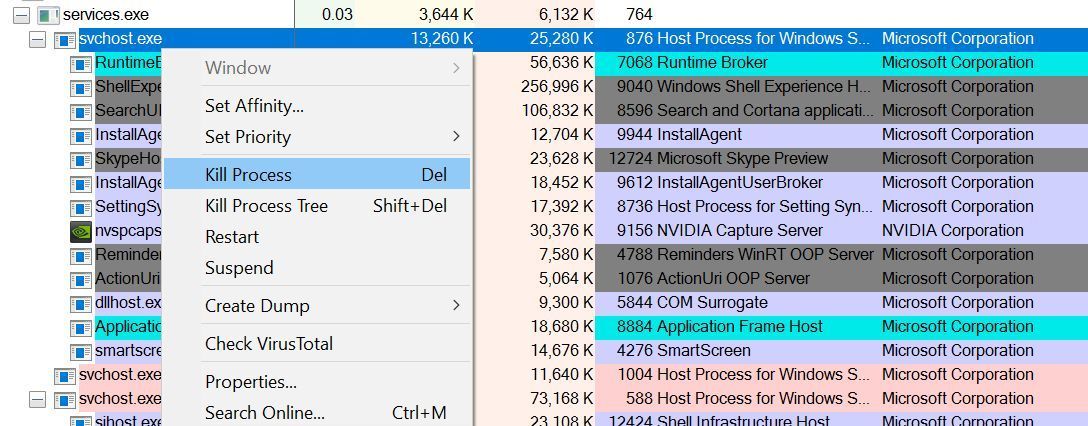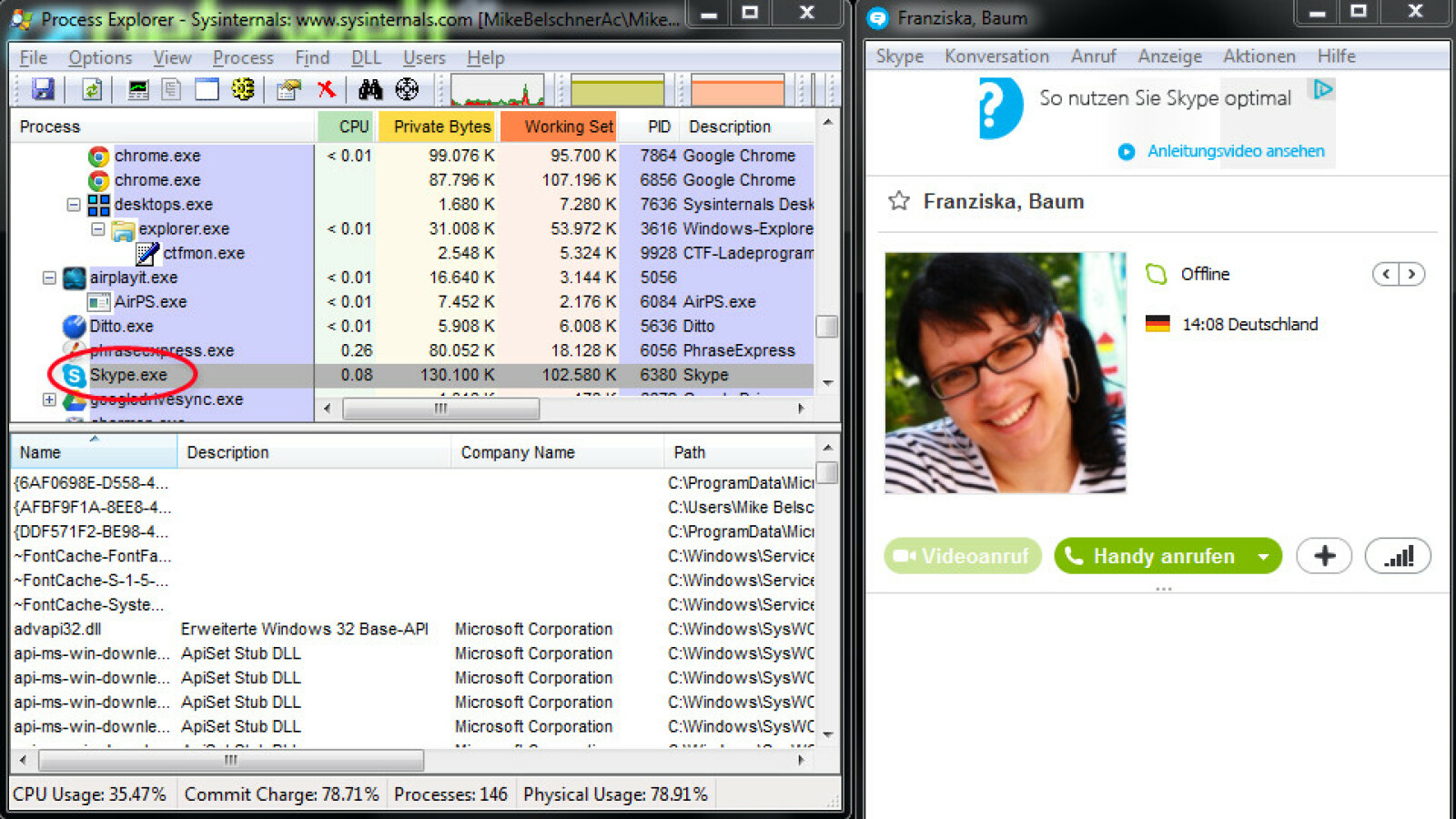
- #MICROSOFT PROCESS EXPLORER 32 BIT#
- #MICROSOFT PROCESS EXPLORER ARCHIVE#
- #MICROSOFT PROCESS EXPLORER LICENSE#
- #MICROSOFT PROCESS EXPLORER WINDOWS#
#MICROSOFT PROCESS EXPLORER WINDOWS#
You must use Filemon and Regmon to monitor Windows 2000 and SharePoint Portal Server 2001 if Process Monitor does not run on you server. Process Monitor does not run on Windows 2000 pre SP4 and may not always be able to be used to troubleshoot SharePoint Portal Server 2001.
#MICROSOFT PROCESS EXPLORER 32 BIT#
Process Monitor runs on Windows 2000 SP4, XP SP2, Vista, 2003, 2008 and Windows 7 32 bit and 64 bit. Process Monitor replaces FileMon and RegMon, except for back level operating systems. Collects data when running and can be filtered to track down process issues. Monitors File, Registry, network and process activity by process. You can also map a drive letter right to the public location by running SUBST drive: \\\tools although this may not work when a proxy server is set. The tools can also be run straight from the web using the following format: and. The first time the programs are run, the EULA will display, after accepting the EULA the first time, this screen should not reappear. There is no installer/uninstall for these tools. All examples are based on at least Process Explorer version 11.31.0.0 and Process Monitor 2.3.0.0. The site has the latest public builds of the tools and is more up to date than the TechNet site. These tools are not loaded on Windows operating systems by default. Microsoft acquired Sysinternals in July, 2006. The Sysinternals web site was created in 1996 by Mark Russinovich and Bryce Cogswell to host their advanced system utilities and technical information.

dllhost.Sysinternals Process Tools Descriptions and Information

Repeat this until you only see the process you are interested in (like Exact Globe processes). You can filter out unwanted processes by right-clicking on a 'process name' and choosing Exclude: Now you have to minimize the output of the trace by only showing the processes you want to see. Disable registry, network and process trace by pressing these buttons: In most trouble shooting scenarios, file tracing is enough. When started, MPM will automatically start showing all processes currently running, with registry, file, network and process activity.
#MICROSOFT PROCESS EXPLORER LICENSE#
On first run, you will have to confirm to a license agreement. The tool does not have to be installed, just run it from the new location.
#MICROSOFT PROCESS EXPLORER ARCHIVE#
Just copy the contents of the archive file to a new folder on the PC or server where you want to trace the problem, for example to C:\Program Files (x86)\Microsoft Process Monitor. Please note that MPM is not an Exact tool and not supported as such. Microsoft Process Monitor (MPM) can be used to trace problems related to file or registry access, or to show which process may be the last to execute before an error occurred.


 0 kommentar(er)
0 kommentar(er)
